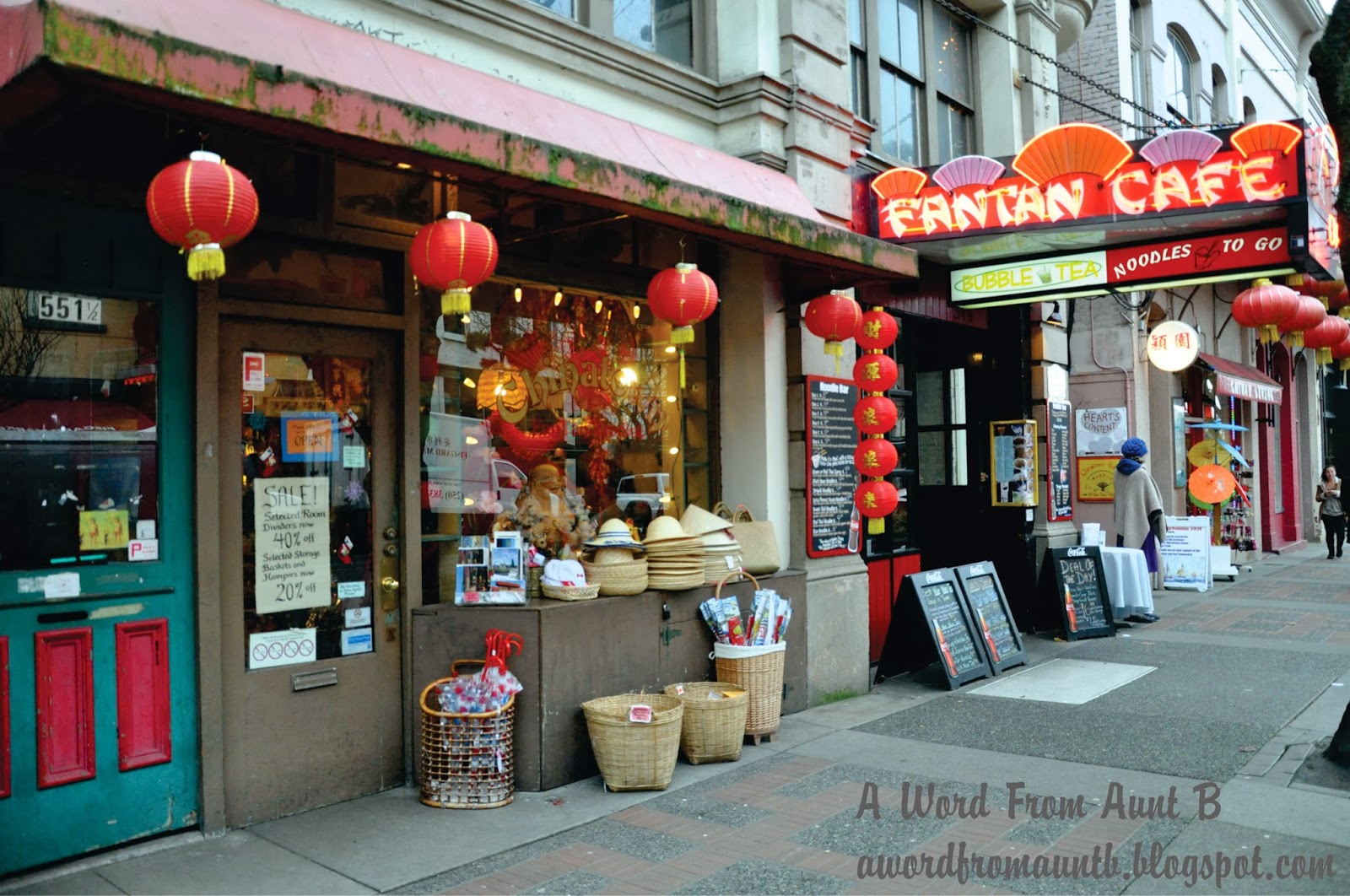It's rare that I find myself with an unscheduled afternoon, but on a day between Christmas and New Years I found myself with just such an opportunity, and decided to use the time to explore Victoria's Chinatown.
It had been a lot of years since I'd spent any amount of time in Chinatown and I'd forgotten what an interesting place it is!
Victoria's Chinatown is Canada's oldest and, in North America, is second in age only to San Francisco. It owes its beginnings to the gold rush. In 1858, Chinese migrants began to travel by ship from San Francisco to Victoria en route to the Klondike. By 1859, Chinese immigrants began to travel directly from China to Canada, and in the 1880's railroad building spurred more arrivals.
Throughout this time and continuing on into the 20th century, Victoria's Chinatown was the main entry point for Chinese people coming to work and live in the "land of promises."
Victoria's Chinatown's development peaked in 1911. From the 1920's through the 1970's it declined, diminishing in size from the six square blocks it once occupied to the two blocks that comprise its footprint now. In the 1980's it underwent a significant revitalization and, in 1995, it was designated a National Historic Site of Canada.
Despite its small size, Victoria's Chinatown retains many of its heritage buildings and remains a vital, active community; a center for cultural activities both within the Chinese Canadian community and the community as a whole.
I entered Chinatown through the Gate of Harmonious Interest, erected in the 1980's at the intersection of Fisgard Street and Government Street.
(For larger views of the pictures in this post, click on any photo to be taken to a slideshow.)
Many of the buildings on Fisgard and Government, and also nearby Herald Street, Store Street and Wharf Street, date back to the mid-to-late 1800's. All are still in use. Most have commercial enterprises - stores, galleries, and restaurants - on the ground floors and many have offices and residences on the upper floors.
Chinatown is an interesting combination of cultural center and tourist attraction. Many of the stores sell import wares targeted specifically for visitors but there is also a wide array of goods imported specifically for the Chinese Canadian community.
The owners and staff in all of the shops I visited were extraordinarily helpful. In one shop, a charming young woman patiently translated the inscriptions on all of the lucky money envelopes for me until I found one that suited, then dug through their stock in the back room to find me multiples of that design. I was very impressed with both her kindness and her patience.
Important to a foodie like me, there is some beautiful produce on offer. If I'd brought my car, I'm sure a lot more of it would have come home with me.
There are several restaurants in Chinatown, some at street level and others on upper floors, or located in side alleys. If you're having trouble deciding which one to visit, follow the locals. You may discover something new to you and very tasty.
About halfway down Fisgard, you will find Victoria's narrowest street: FanTan Alley. So narrow is the alley that you can miss it entirely if you're not looking for it.
This is what you see walking down Fisgard Street toward the water. The sign on the restaurant lets you know you're headed in the right direction, but there's no alley in sight!
And then, suddenly, there it is.
This is the view standing in the alley and looking up.
Despite its narrow width, FanTan alley is home to several interesting businesses. It's not to be missed, either as a curiosity or as a place to shop. No trip to Victoria's Chinatown would be complete without it.
I'm so glad I decided to spend my winter afternoon rediscovering this interesting place. I found a little bit of history, some very interesting buildings and streets, unusual shops, beautiful galleries, and many pleasant people. Time well spent!
If you would like to read more about the history of Victoria's Chinatown, and about what it offers today, this website offers lots of helpful and interesting information.








